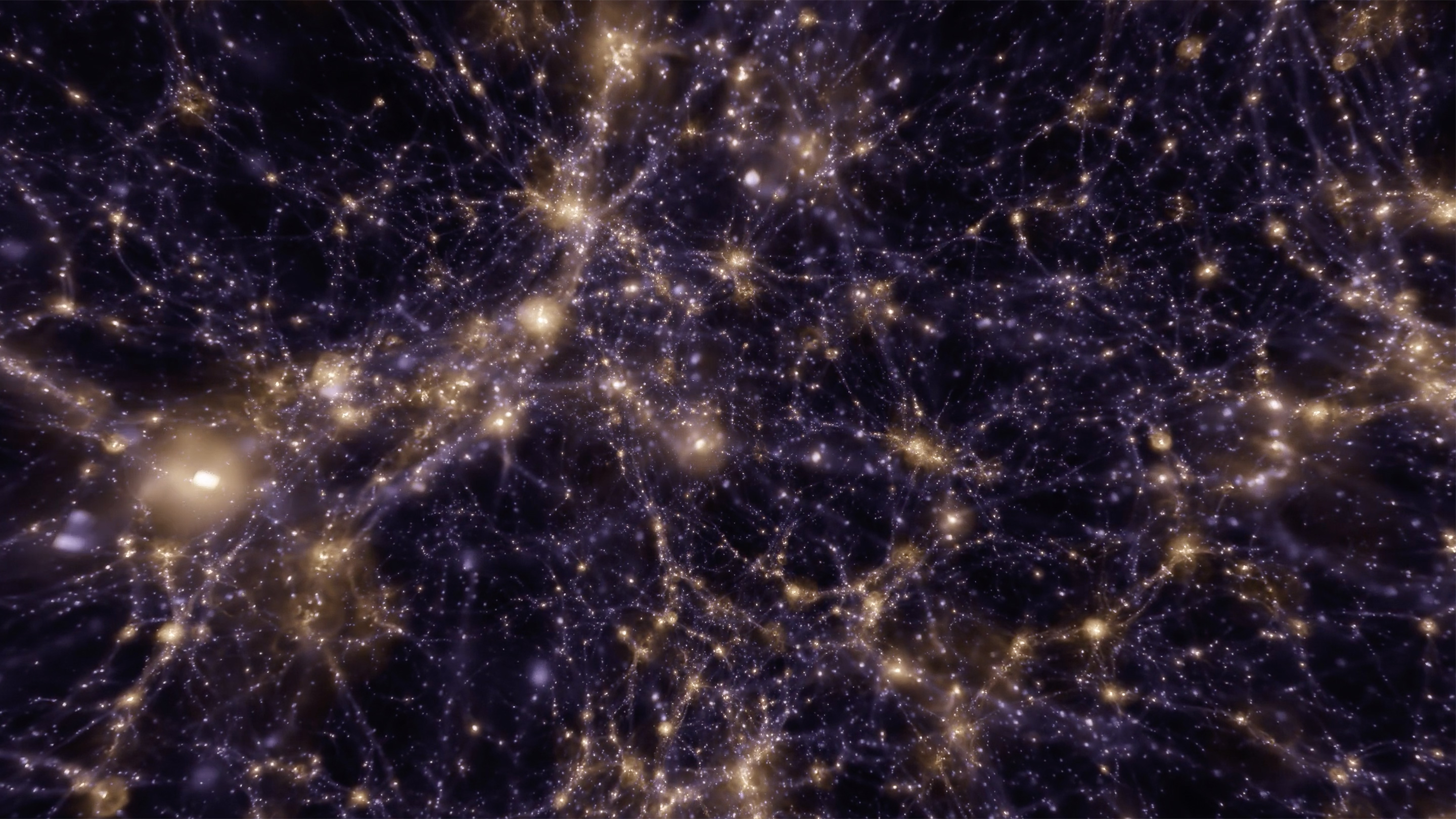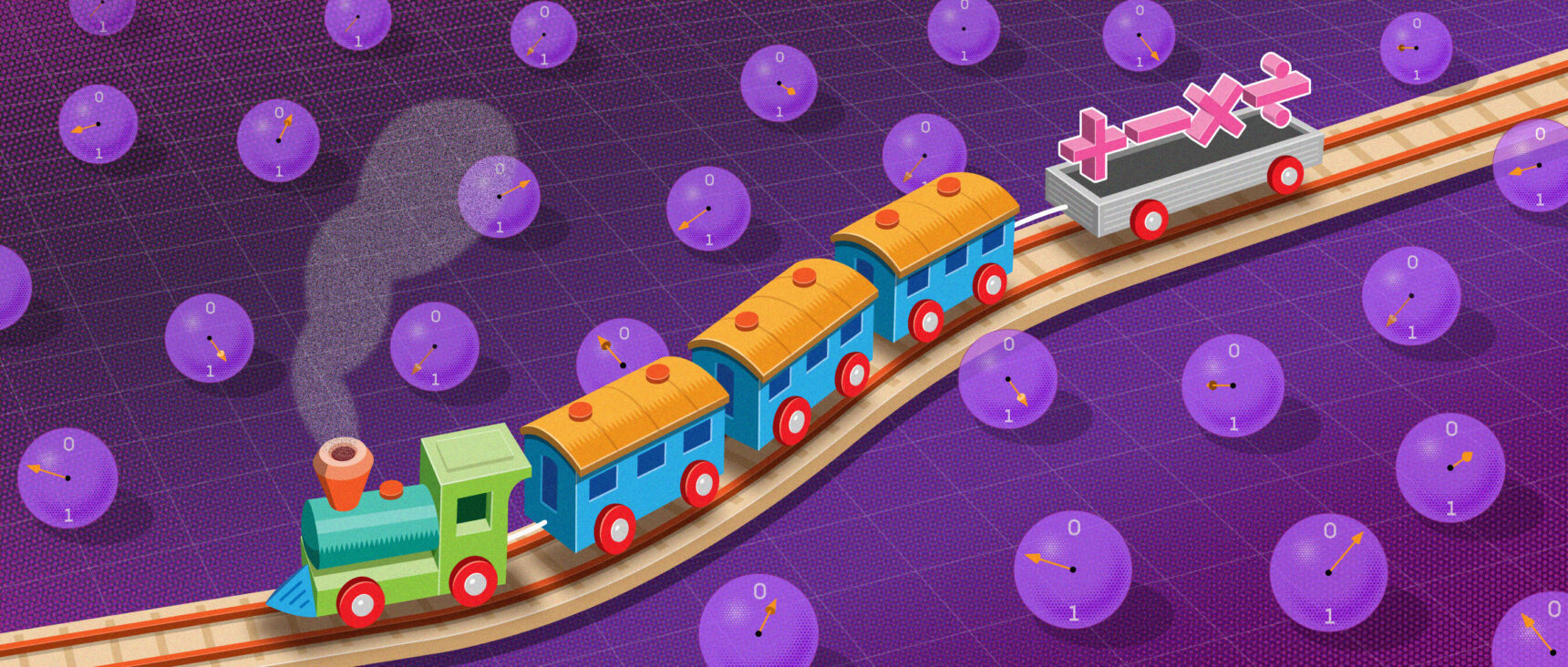Any Single Galaxy Reveals the Composition of an Entire Universe
Introduction
A group of scientists may have stumbled upon a radical new way to do cosmology.
Cosmologists usually determine the composition of the universe by observing as much of it as possible. But these researchers have found that a machine learning algorithm can scrutinize a single simulated galaxy and predict the overall makeup of the digital universe in which it exists — a feat analogous to analyzing a random grain of sand under a microscope and working out the mass of Eurasia. The machines appear to have found a pattern that might someday allow astronomers to draw sweeping conclusions about the real cosmos merely by studying its elemental building blocks.
“This is a completely different idea,” said Francisco Villaescusa-Navarro, a theoretical astrophysicist at the Flatiron Institute in New York and lead author of the work. “Instead of measuring these millions of galaxies, you can just take one. It’s really amazing that this works.”
It wasn’t supposed to. The improbable find grew out of an exercise Villaescusa-Navarro gave to Jupiter Ding, a Princeton University undergraduate: Build a neural network that, knowing a galaxy’s properties, can estimate a couple of cosmological attributes. The assignment was meant merely to familiarize Ding with machine learning. Then they noticed that the computer was nailing the overall density of matter.
“I thought the student made a mistake,” Villaescusa-Navarro said. “It was a little bit hard for me to believe, to be honest.”
The results of the investigation that followed appeared in a January 6 preprint that has been submitted for publication. The researchers analyzed 2,000 digital universes generated by the Cosmology and Astrophysics with Machine Learning Simulations (CAMELS) project. These universes had a range of compositions, containing between 10% and 50% matter with the rest made up of dark energy, which drives the universe to expand faster and faster. (Our actual cosmos consists of roughly one-third dark and visible matter and two-thirds dark energy.) As the simulations ran, dark matter and visible matter swirled together into galaxies. The simulations also included rough treatments of complicated events like supernovas and jets that erupt from supermassive black holes.
Ding’s neural network studied nearly 1 million simulated galaxies within these diverse digital universes. From its godlike perspective, it knew each galaxy’s size, composition, mass, and more than a dozen other characteristics. It sought to relate this list of numbers to the density of matter in the parent universe.
It succeeded. When tested on thousands of fresh galaxies from dozens of universes it hadn’t previously examined, the neural network was able to predict the cosmic density of matter to within 10%. “It doesn’t matter which galaxy you are considering,” Villaescusa-Navarro said. “No one imagined this would be possible.”
“That one galaxy can get [the density to] 10% or so, that was very surprising to me,” said Volker Springel, an expert in simulating galaxy formation at the Max Planck Institute for Astrophysics who was not involved in the research.
The algorithm’s performance astonished researchers because galaxies are inherently chaotic objects. Some form all in one go, and others grow by eating their neighbors. Giant galaxies tend to hold onto their matter, while supernovas and black holes in dwarf galaxies might eject most of their visible matter. Still, every galaxy had somehow managed to keep close tabs on the overall density of matter in its universe.
One interpretation is “that the universe and/or galaxies are in some ways much simpler than we had imagined,” said Pauline Barmby, an astronomer at Western University in Ontario. Another is that the simulations have unrecognized flaws.
The team spent half a year trying to understand how the neural network had gotten so wise. They checked to make sure the algorithm hadn’t just found some way to infer the density from the coding of the simulation rather than the galaxies themselves. “Neural networks are very powerful, but they are super lazy,” Villaescusa-Navarro said.
Through a series of experiments, the researchers got a sense of how the algorithm was divining the cosmic density. By repeatedly retraining the network while systematically obscuring different galactic properties, they zeroed in on the attributes that mattered most.
Near the top of the list was a property related to a galaxy’s rotation speed, which corresponds to how much matter (dark and otherwise) sits in the galaxy’s central zone. The finding matches physical intuition, according to Springel. In a universe overflowing with dark matter, you’d expect galaxies to grow heavier and spin faster. So you might guess that rotation speed would correlate with the cosmic matter density, although that relationship alone is too rough to have much predictive power.
The neural network found a much more precise and complicated relationship between 17 or so galactic properties and the matter density. This relationship persists despite galactic mergers, stellar explosions and black hole eruptions. “Once you get to more than [two properties], you can’t plot it and squint at it by eye and see the trend, but a neural network can,” said Shaun Hotchkiss, a cosmologist at the University of Auckland in New Zealand.
While the algorithm’s success raises the question of how many of the universe’s traits might be extracted from a thorough study of just one galaxy, cosmologists suspect that real-world applications will be limited. When Villaescusa-Navarro’s group tested their neural network on a different property — cosmic clumpiness — it found no pattern. And Springel expects that other cosmological attributes, such as the accelerating expansion of the universe due to dark energy, have little effect on individual galaxies.
The research does suggest that, in theory, an exhaustive study of the Milky Way and perhaps a few other nearby galaxies could enable an exquisitely precise measurement of our universe’s matter. Such an experiment, Villaescusa-Navarro said, could give clues to other numbers of cosmic import such as the sum of the unknown masses of the universe’s three types of neutrinos.
But in practice, the technique would have to first overcome a major weakness. The CAMELS collaboration cooks up its universes using two different recipes. A neural network trained on one of the recipes makes bad density guesses when given galaxies that were baked according to the other. The cross-prediction failure indicates that the neural network is finding solutions unique to the rules of each recipe. It certainly wouldn’t know what to do with the Milky Way, a galaxy shaped by the real laws of physics. Before applying the technique to the real world, researchers will need to either make the simulations more realistic or adopt more general machine learning techniques — a tall order.
“I’m very impressed by the possibilities, but one needs to avoid being too carried away,” Springel said.
But Villaescusa-Navarro takes heart that the neural network was able to find patterns in the messy galaxies of two independent simulations. The digital discovery raises the odds that the real cosmos may be hiding a similar link between the large and the small.
“It’s a very beautiful thing,” he said. “It establishes a connection between the whole universe and a single galaxy.”
Editor’s note: A number of the authors on this study are affiliated with the Flatiron Institute, a scientific institution funded by the Simons Foundation, which also funds this editorially independent magazine. One co-author is David Spergel, the president of the Simons Foundation. Simons Foundation funding decisions have no influence on our coverage.




